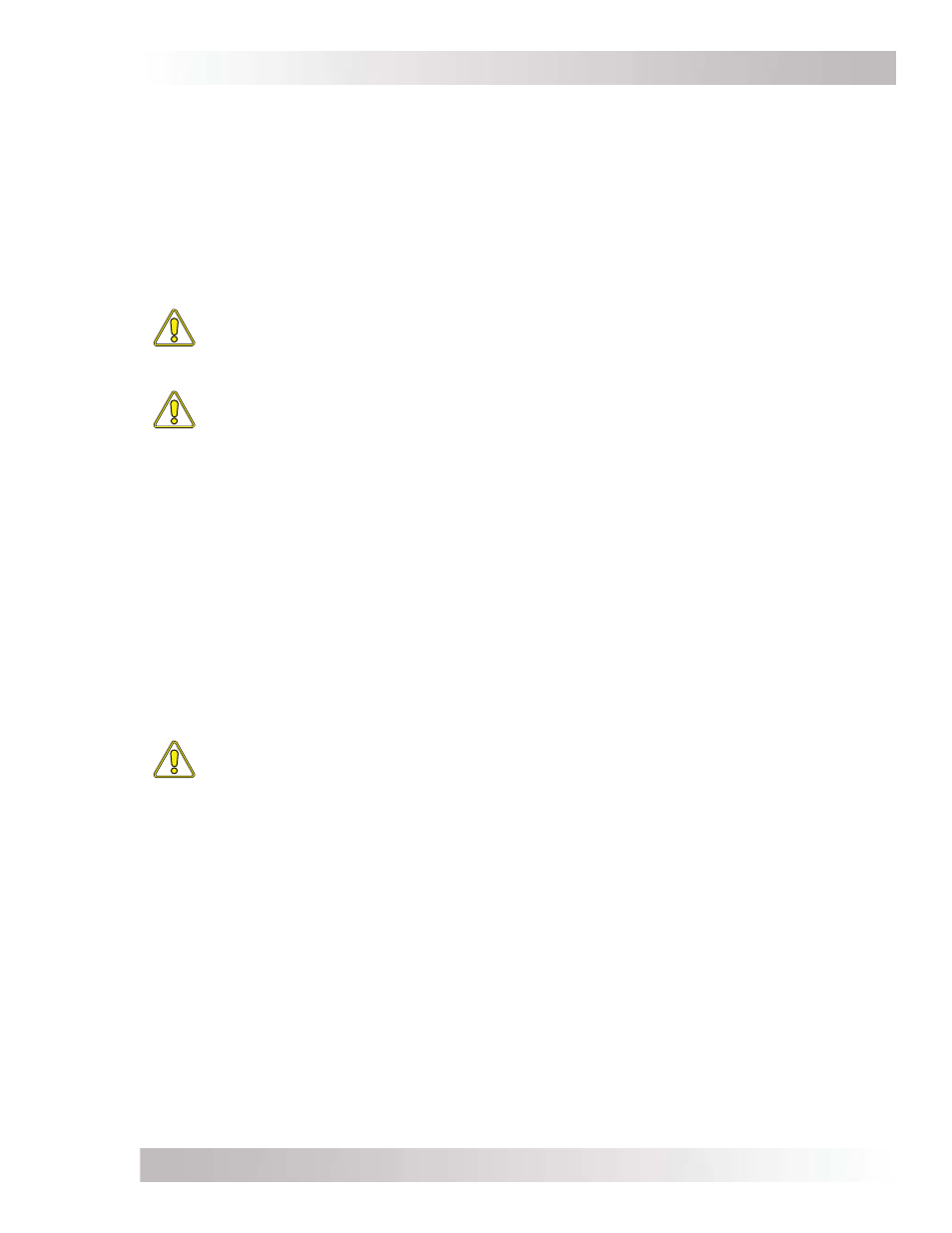Magnum Energy AC Load Diversion Controller (ACLD-40) User Manual
Page 26

Page 19
©
2015 Sensata Technologies
Installation
2.9 ACLD Load Requirements
A diversion load is required to be connected to the ACLD. When the ACLD is activated during a
power outage, current from the renewable energy source is used to charge the battery. As the
battery becomes charged, the ACLD connects the diversion load to consume any excess power
—preventing the battery from being overcharged and damaged.
The diversion load connected to the ACLD must:
• handle
240VRMS,
• be pure resistive,
• sized a minimum of 110% of the renewable energy source,
• rated no less than 2500 watts and no greater than 5000 watts.
CAUTION: Do not use light bulbs, motors, or other electrical devices for diversion
loads. They are not stable and may be damaged or fail—causing the battery to be
overcharged. Only purely resistive heating elements (such as “Wire-wound” resistors or
electric heating elements) rated for 240-volts RMS should be used.
CAUTION: Ensure the diversion load is sized correctly. If the diversion load is sized too
low or too high, the ACLD could fault and disconnect—possibly resulting in damage to
the system battery or other system components.
2.9.1 Selecting and Sizing the Diversion Load
To size the diversion load, you should fi rst consider the MS-PAE Series inverter that will be used
with the ACLD controller. The power output of the renewable energy source must be sized 10%
lower than the continuous power rating of the chosen inverter. This is to ensure the inverter will
not be damaged when handling the maximum current from the renewable energy source.
The load must have a total power rating at least 10% greater than the renewable energy source’s
maximum output to ensure all the excess current can be diverted from the batteries to prevent
overcharging. Also, each load (primary or secondary) must be no less than 2500 watts or greater
than 5000 watts to prevent the controller’s overload protection from activating; if this happens, the
diversion load would disconnect allowing all the excess current to go into the battery—causing an
overcharge condition.
Note: If using the MS4024PAE, the renewable energy source must be no greater than 3600 watts
and the load should be at least 4000 watts. For the MS4448PAE, the renewable energy source
must be no greater than 4000 watts and the diversion load should be at least 4400.
CAUTION: To prevent the battery from being overcharged and damaged, it is critical
that one of the diversion loads connected to the ACLD must always be available (must
not be thermostat controlled or be able to be turned off) and be correctly sized to
handle the full power produced by the renewable energy source (wind, hydro, etc).
If only one load is wired to the ACLD, it must be sized correctly and always be on and available—it
cannot be allowed to turn off. However, if there is both a primary and secondary load wired to
the ACLD, then the primary load does not need to stay on, nor is it required to be sized to handle
the full output current of the renewable energy source. However, if the primary load is allowed to
turn off (i.e., water heater with thermostat control) or not large enough to handle the full output
current, then the secondary load is used as a back-up to the primary load and must always be on
and available if needed—and correctly sized to handle the full power produced by the renewable
energy source (wind, hydro, etc.).
Note: If the primary load is not sized large enough to consume the excess power, the ACLD will
activate an internal relay to connect the secondary load in parallel with the primary load. Once
the secondary load connects, the benefi t of the primary load will not be utilized because the
current to the primary load will be decreased. For example, if the primary load is a small water
heater, and the renewable energy is greater than the small water heater can handle, the ACLD
will connect the secondary load. Once the secondary has connected, the water heater element is
no longer able to stay hot because it is receiving less current now that the secondary load is in
parallel with the water heater (primary load).
